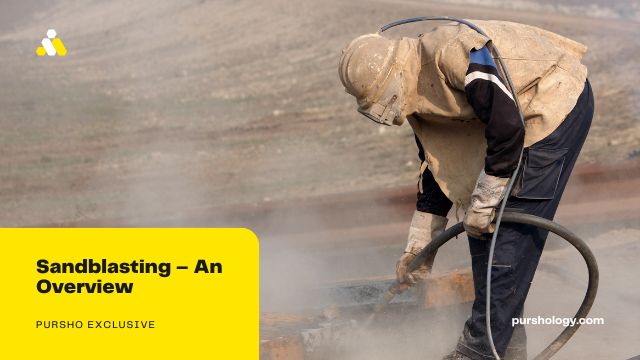Sandblasting is a process of removing impurities, paint, rust, or other contaminants from surfaces using compressed air and abrasive materials. It is a common technique used in various industries like construction, automotive, manufacturing, and restoration. Sandblasting is an effective way to clean and prepare surfaces before applying coatings or paints, but it requires proper equipment, safety measures, and expertise.
The sandblasting process involves a sandblaster, an air compressor, and abrasive material. The abrasive material is usually sand, but it can also be other materials like steel shot, glass beads, or walnut shells. The sandblaster is a tool that combines compressed air and abrasive material to create a high-pressure stream that can remove contaminants from surfaces. The air compressor provides the pressure needed to propel the abrasive material through the sandblaster.
The experts at Blastika are specialize in the field of mechanized surface treatment and heating. They have been accumulating experience for 13 years, they are interested in new technologies and adapt to the changing market. Therefore, they can offer you the best combination of experience and the latest technology.
The Process of Sandblasting
The sandblasting process begins by preparing the surface to be blasted. This includes cleaning the surface of any loose debris or contaminants, and masking or covering any areas that should not be blasted. This is an important step because sandblasting can remove not only contaminants but also the surface itself if done improperly. Once the surface is prepared, the sandblaster is loaded with the chosen abrasive material and connected to the air compressor.
The sandblaster is then aimed at the surface to be blasted, and the trigger is pulled to release the high-pressure stream of abrasive material. The sandblaster is moved back and forth over the surface to remove contaminants evenly. The amount of pressure and the type of abrasive material used will depend on the type of surface being blasted and the desired result.
Where Sandblasting is Used?
Sandblasting has many uses across various industries. In construction, sandblasting is often used to remove old paint or rust from metal surfaces, such as bridges or buildings. This helps to prepare the surface for new paint or coatings and helps to extend the life of the structure. In the automotive industry, sandblasting is used to remove old paint or rust from cars or trucks, allowing for new paint to be applied. Sandblasting is also used in manufacturing to remove contaminants from surfaces before they are assembled.
Risks of Sandblasting
While sandblasting can be an effective way to clean and prepare surfaces, it also has potential risks. The high-pressure stream of abrasive material can cause injury if it comes into contact with skin or eyes. The fine particles produced during the sandblasting process can also be harmful if inhaled. To mitigate these risks, proper safety equipment must be used, including gloves, goggles, and a respirator. It is also important to work in a well-ventilated area to reduce the risk of inhaling harmful particles.
In addition to safety concerns, sandblasting also has environmental considerations. The use of sand as an abrasive material can create dust that can harm the environment and the health of nearby individuals. To reduce the environmental impact of sandblasting, alternative abrasive materials like glass beads or walnut shells can be used.
To Conclude
In conclusion, sandblasting is a process used across various industries to remove contaminants from surfaces. It is an effective way to prepare surfaces for new paint or coatings, but it also comes with potential risks and environmental considerations. Proper safety measures, equipment, and expertise are necessary to ensure the safe and effective use of sandblasting. As technology advances, new abrasive materials and techniques may be developed that can further reduce the environmental impact and increase the efficiency of the sandblasting process.




